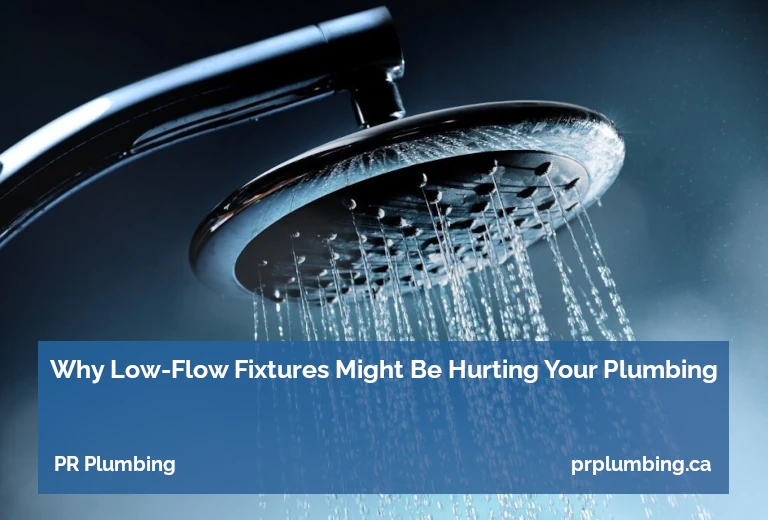Conserving water isn’t just about being environmentally conscious. It’s also about keeping utility bills low. With rising water costs and stricter efficiency standards, low-flow fixtures have become a go-to upgrade for modern homeowners.
Low-flow toilets, faucets, and showerheads are designed to use significantly less water without sacrificing performance. In theory, it’s a win-win. You reduce your environmental footprint and save money.
Unfortunately, if these fixtures aren’t installed properly, or if they are added to an older plumbing system that wasn’t designed for them, they can actually cause more harm than good.
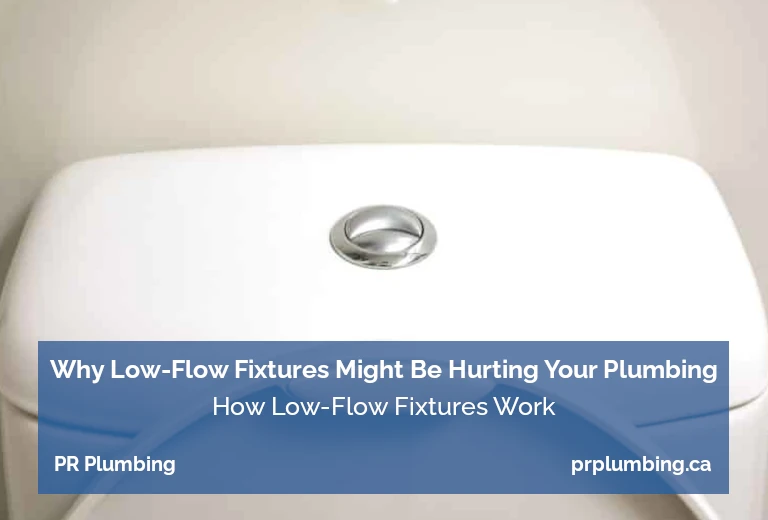
How Low-Flow Fixtures Work
To understand where things can go wrong, it helps to know what makes low-flow fixtures different from traditional ones.
- Low-flow toilets typically use between 4.8 and 6 litres per flush, compared to older models that use up to 13 litres.
- Low-flow faucets restrict water flow to around 5.7 litres per minute.
- Low-flow showerheads use about 7.6 litres per minute, compared to older versions that could pump out double that.
They achieve this through air mixing,pressure regulation, and internal flow restrictors. But, when your home’s plumbing system wasn’t built with these reduced flow rates in mind, it can lead to a chain reaction of frustrating (and sometimes costly) issues.
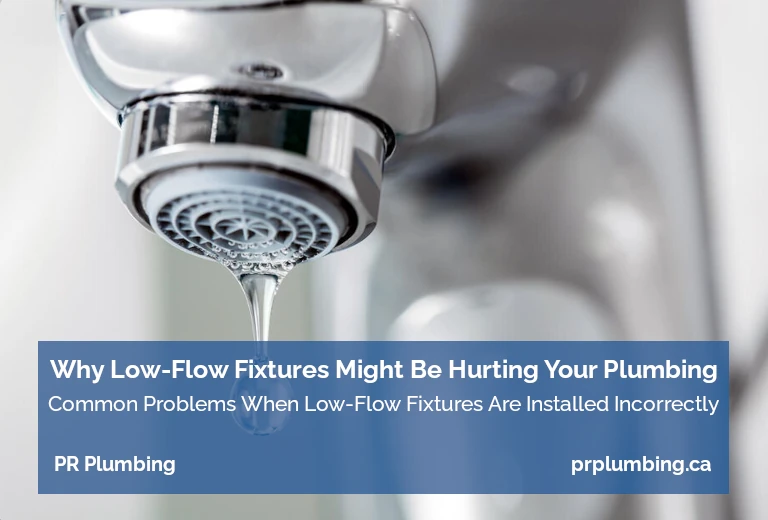
Common Problems When Low-Flow Fixtures Are Installed Incorrectly
1- Inconsistent Water Pressure
This is the most common complaint among homeowners after switching to low-flow fixtures. If the pressure regulator isn’t properly adjusted, or if sediment buildup exists in the supply lines, water may trickle instead of flow smoothly.
Low-flow fixtures depend on stable water pressure to perform well. Even a small imbalance can make them feel weak or unusable.
2- Frequent Drain Clogs
Older homes in the Durham Region, especially those built before the 1980’s were designed with higher water flow in mind. That means the slope and diameter of the drain lines rely on a certain amount of water volume to move waste water efficiently.
When you introduce ultra-efficient toilets or faucets that don’t push enough water through, waste may not travel far enough before settling on the pipe. Over time, this leads to clogs, slow drains, and even sewer backups.
3- Poor Hot Water Performance
Low-flow showerheads can sometimes “confuse” older water heaters or pressure-balancing valves. You might get sudden temperature shifts or reduced hot water delivery if the heater isn’t calibrated to handle lower flow rates.
4- Noise and Air Pressure Issues
If the wrong aerator or restrictor is used, or if air gets trapped in the line, your new faucet might hiss, sputter, or vibrate. These noises are signs of trapped air pockets of turbulent flow and both are indicators of installation issues.

Why Professional Installation Matters
Installing low-flow fixtures may seem straightforward, but plumbing systems vary widely between homes, especially across older Ontario properties. A professional plumber doesn’t just replace a faucet, they evaluate your system’s capacity to handle reduced water flow without side effects.
Here’s what a licensed plumber checks during installation:
- Pressure testing: Ensuring your system maintains optimal PSI (typically between 50-70)
- Pipe slope and size: Older homes may need minor drain adjustments to prevent buildup.
- Fixture compatibility: Some older valves or heaters may require updates to work properly.
- Ventilation and trap seal protection: To prevent sewer odours and gurgling sounds.
When installed with these considerations in mind, low-flow fixtures perform exactly as intended, efficient, quiet, and reliable.
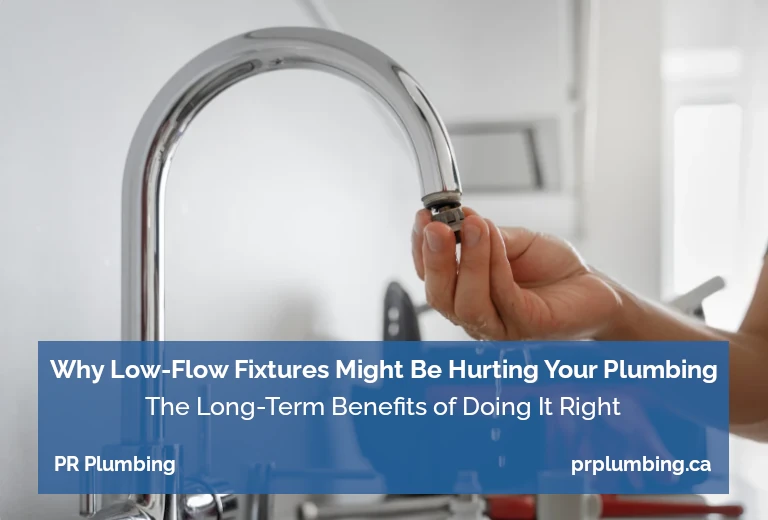
The Long-Term Benefits of Doing It Right
When low-flow fixtures are properly installed, they’re one of the smartest upgrades a homeowner can make. Benefits include:
- Lower water bills: You can save thousands of litres per year.
- Less strain on your water heater: Using less hot water reduces energy costs.
- Improved environmental footprint: Ontario municipalities encourage water conservation, and some even offer rebates.
- Increased resale value: Energy-efficient homes are more attractive to buyers.
But those benefits only hold if your plumbing system is balanced and well-maintained. Otherwise, you’ll spend a lot on constant repairs.

How to Tell If Your Fixtures Are Causing Problems
If you recently upgraded your bathroom or kitchen and notice any of these symptoms, your fixtures may need professional adjustment:
- Gurgling or bubbling sounds around drains
- Slow drainage after flushing
- Uneven water pressure between rooms
- Sudden bursts of cold or hot water during showers
- Toilets that require double flushing
These signs often point to a mismatch between fixture design and existing plumbing infrastructure.
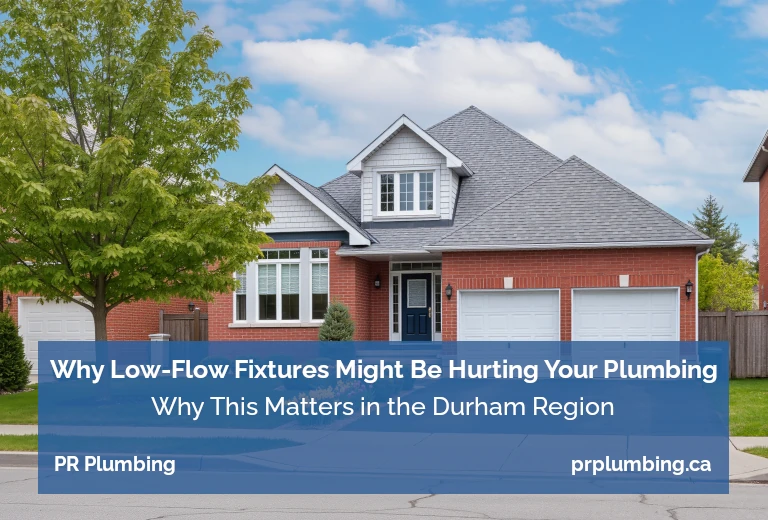
Why This Matters in the Durham Region
Homes across the region vary widely by age. Many still rely on mid-century plumbing systems not optimized for today’s water-efficient technology.
Municipal water systems also fluctuate slightly in pressure depending on neighbourhood demand and season. That’s another reason it’s important to have fixtures calibrated to your specific property.
A quick inspection can confirm whether your fixtures are working efficiently or silently setting you up for future repairs.
Efficiency Shouldn’t Come at a Cost
Low-flow technology is one of the best innovations for sustainable living, but like any upgrade, it has to be done right.
Before you invest in upgrades or replacements, have a licensed plumber evaluate your system to ensure your fixtures work with your plumbing, not against it.
Call PR Plumbing on (905) 429-9622 to schedule your professional inspection.
